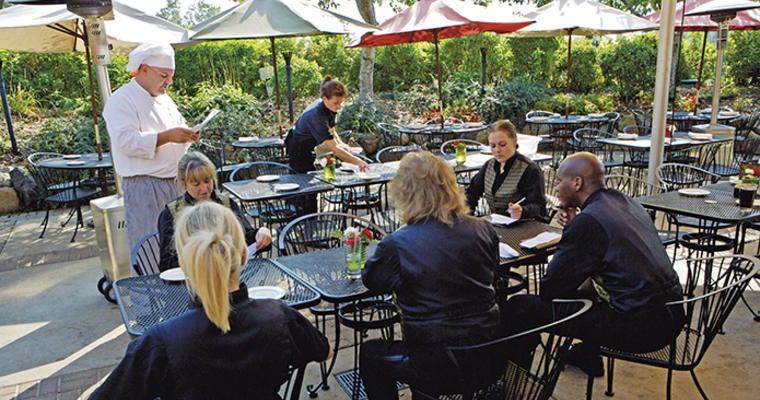Staff training should start 90 days before fully rolling out your new or updated menu.
Before you roll out a new or updated menu, you need to spend some time training and educating your staff. Yes, they need to know the basics, like when the menu is launching and what dishes are on it. But it’s a good idea to take that conversation deeper so that they can wrap their heads around executing and communicating it.
Start by sharing your why
Give your back-of-house and front-of-house the reason behind the change, or in the case of a new menu, the strategy behind your choices, at the same time. Cover how guests will benefit from these changes and expectations around communicating them. Doing this will foster understanding, give your staff something to rally around and reinforce that they are one team working to sell the same thing: great experiences centered around the food you offer.
Common reasons for why a menu changes:
- A change in the seasons
- Regularly scheduled refresh
- Revised sales or margin goals
- Improved guest satisfaction
If the goals and changes to your menu are accompanied by price increases, help your team anticipate and navigate questions from guests about the higher costs. Also, share any customer-facing marketing materials and your overall brand direction. This shows your team that you’re fully vested in the success of this menu, which they’ll see as an investment in their success.
90 Days prior to full menu roll-out: engage your staff
By this point, you should be testing your new or revised menu items through a soft launch and LTOs . Gather your front-of-house staff members and ask them for input on the menu descriptions. They are hearing guest feedback first-hand and can use that information to inform phrasing, descriptors and keywords.
Talk to your back-of-house staff about how the execution is going. Ask them questions around timing, consistency and workflow. Work through modifications to improve efficiency, and review and revise plate presentations to ensure your customers will have nothing but good things to say. Moving forward, keep the focus on consistently executing every dish. Hold tight to that old saying, “practice makes perfect.”
Once descriptions and execution are finalized, work through costing everything out and landing on definitive menu prices. This is also the time to shoot and select the food photography that will be featured in your menu and to produce communications (table tents, signage, etc.) to advertise it.
60 Days prior to full menu roll-out: train your staff
Select team captain(s) from both your back- and front-of-house staff. As captains, it will be their responsibility to support you in getting your full staff up to speed with the new menu. Share the roll-out with them, covering descriptions, plate presentations, pictures, timing and selling strategies for every item along with any connections to the old menu (if applicable). Co-create a training plan, so that your captains take ownership of the menu roll-out and disseminate that mindset to their teammates.
Two key topics should be included in the training plan: what’s in it for your staff and what’s in it for your customers. Look at each role within your restaurant and come up with at least one way the new menu benefits it (ex. our new menu will likely create higher check averages, so our servers will see higher tips). In terms of your guests, talk through likely objections they’ll have and things your front-of-house staff can say to overcome them. Play out those scenarios until everyone is comfortable addressing them.
30 Days prior to full menu roll-out: tasting and execution
At this time, your entire staff should be fully trained on your menu, led by your team captains. Sit down with your front-of-house staff and taste the full menu. As they try each item, ask your team captain(s) to reiterate the ingredients, preparation, pricing and presentation, connecting it to the “why.” Have them walk through the placement of items on the menu, the reasons for highlighting anything that’s featured, overall goals for your menu and how it all works together to best serve your brand.
Do the same with your back-of-house staff, with those team captain(s) leading that meeting. Similarly, discuss the ingredients, preparation and presentation, again bringing it back to the “why” and leading into placement, goals and connection to your brand.
15 Days prior to full menu roll-out: role reviews
Schedule a meeting with your full staff. Have your team captains run through the roll-out plan one more time, focusing on:
- Execution
- Role ownership by activity (server, busser, hostess, cook, etc.)
- Guest communication (as appropriate for each role)
- Gathering and sharing guest feedback
At the end of the day, giving your team time to on-ramp your new menu not only helps them confidently sell it and flawlessly execute it—it also helps them buy into it, making them more likely to give their best to their jobs every day.

























